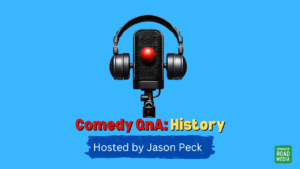The American author and humorist E.B. White (who wrote Charlotte’s Webb and Stuart Little) once said: “Analyzing humour is like dissecting a frog. Few people are interested and the frog dies of it”. In my on-going mini series Secret Comedy Writing Techniques, I try not to analyse why something’s funny. I don’t want to talk about …
Tag: humor
May 04
How Do You Know if Your Comedy is Quantifiable?
“How Do You Know if Your Comedy is Quantifiable?”, “How do you know you’re being funny?” and “How do you measure comedy?” These were just some of the questions I was asked recently. I responded: “yes, comedy is measureable. If somebody laughs, it’s comedy. If no-one laughs it isn’t. But if you get no laughs, …
Apr 28
Secret Comedy Writing Technique – Spoonerisms
In my on-going mini series Secret Comedy Writing Techniques I’m going to briefly cover Spoonerisms. A spoonerism is a play on words in which corresponding consonants, vowels, or morphemes are switched. It is named after the Reverend William Archibald Spooner (1844–1930), Warden of New College, Oxford, who was notoriously prone to oming out with these …
Apr 18
Secret Comedy Writing Technique – Colemanballs
The next entry in my mini series Secret Comedy Writing Techniques is the technique Colemanballs. This is a term coined by the British satirical magazine Private Eye. It describes verbal gaffes made by (usually British) sports commentators. As you will see they’re very similar to malapropisms, as I mention in a previous post. The term …
Apr 12
Secret Comedy Writing Technique – Goldwynisms
In my on-going mini series Secret Comedy Writing Techniques I’m going to deal with Goldwynisms. To give you a quick context Film Studio owner Samuel Goldwyn of M.G.M was famous for his own version of malapropisms and various speech errors which ended up being called: “Goldwynisms”. The Wikipedia definition is as follows: “a humorous statement …



